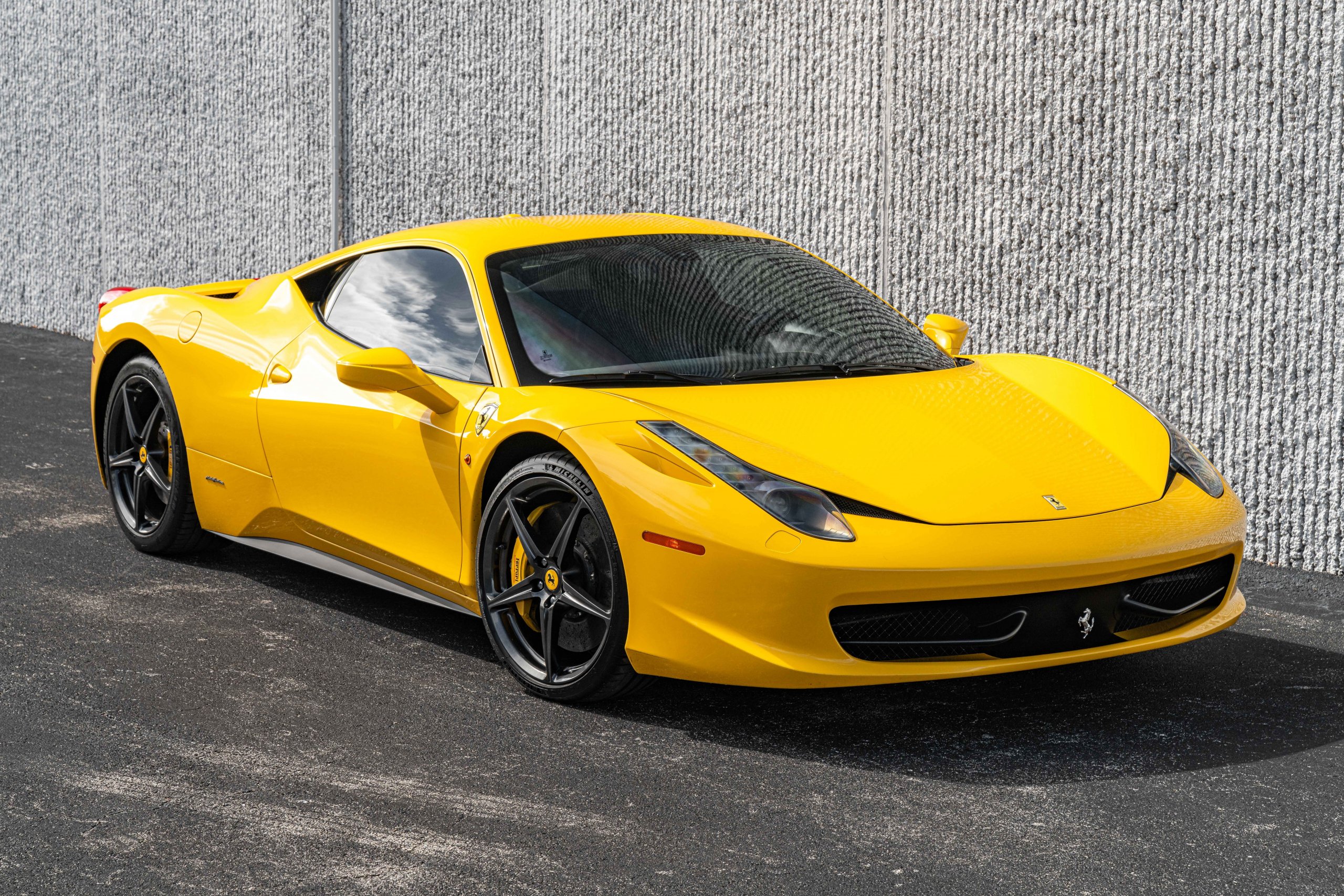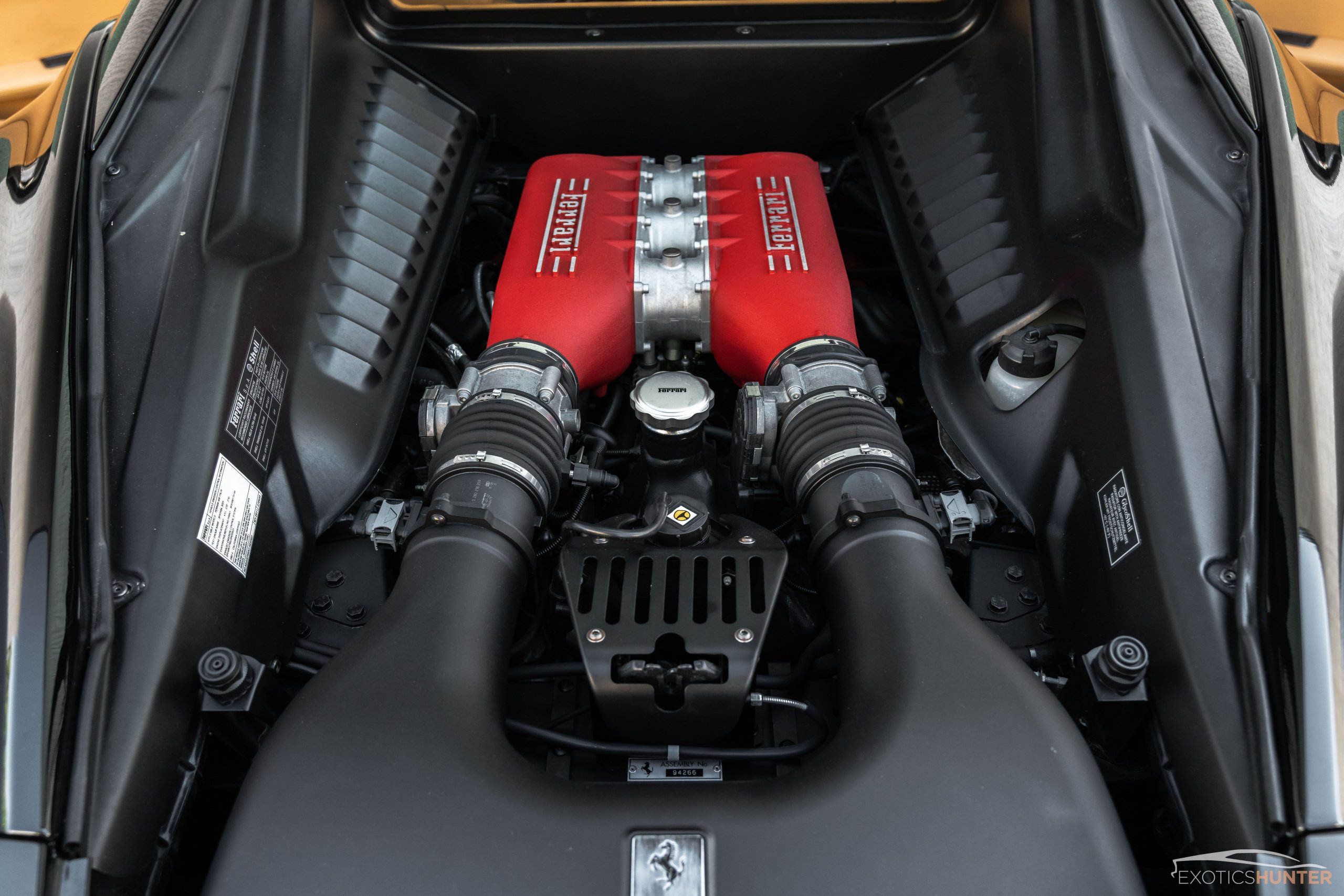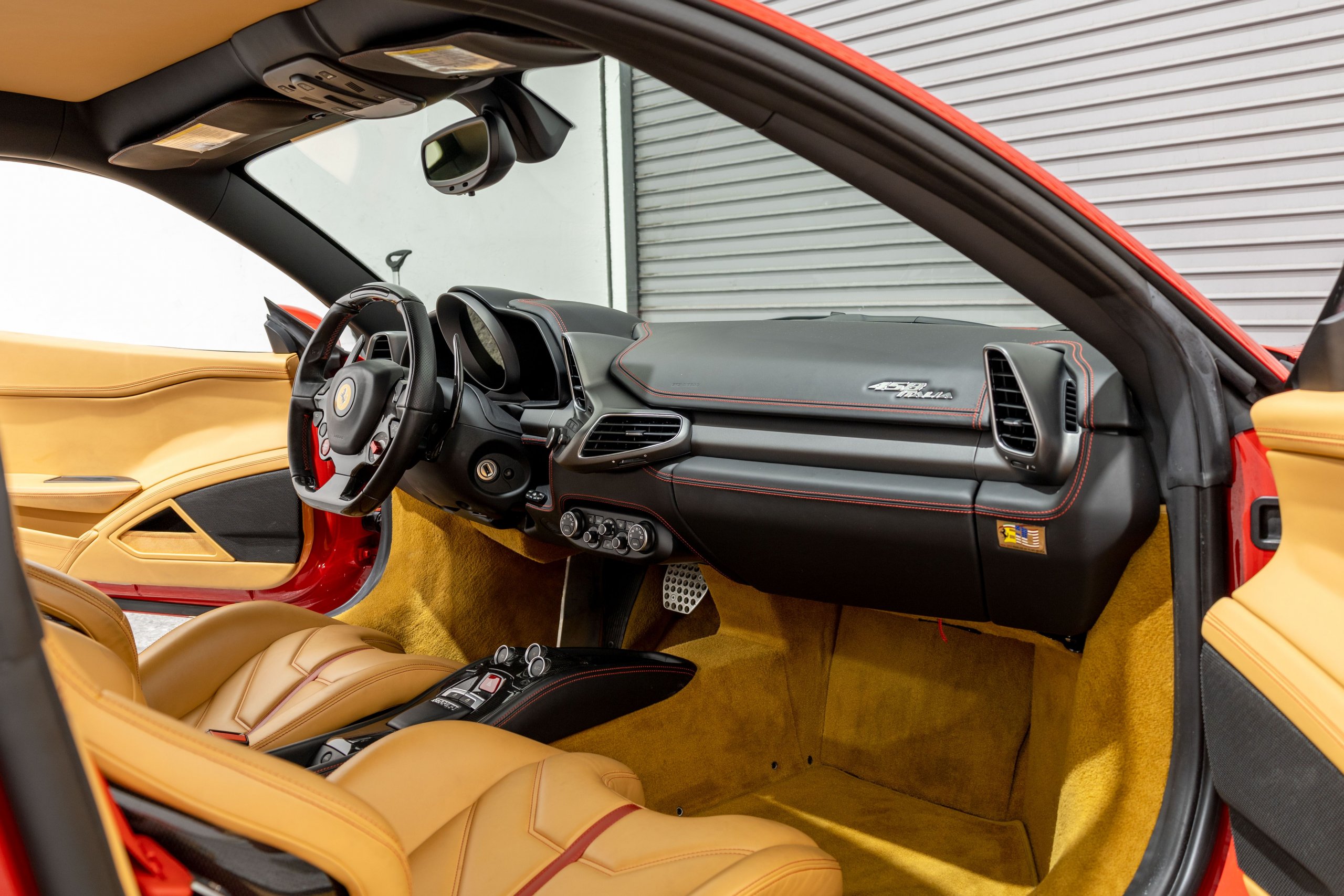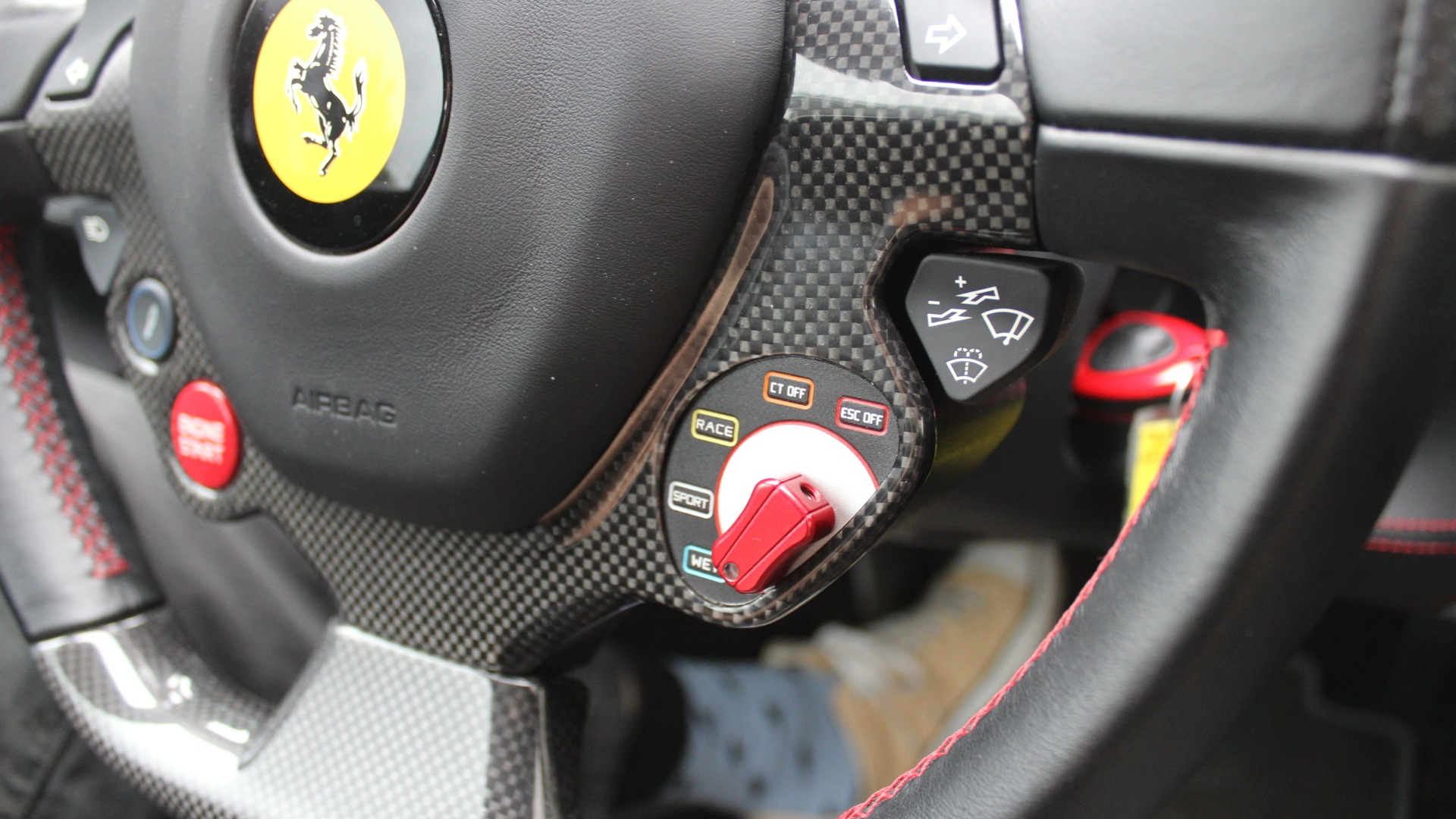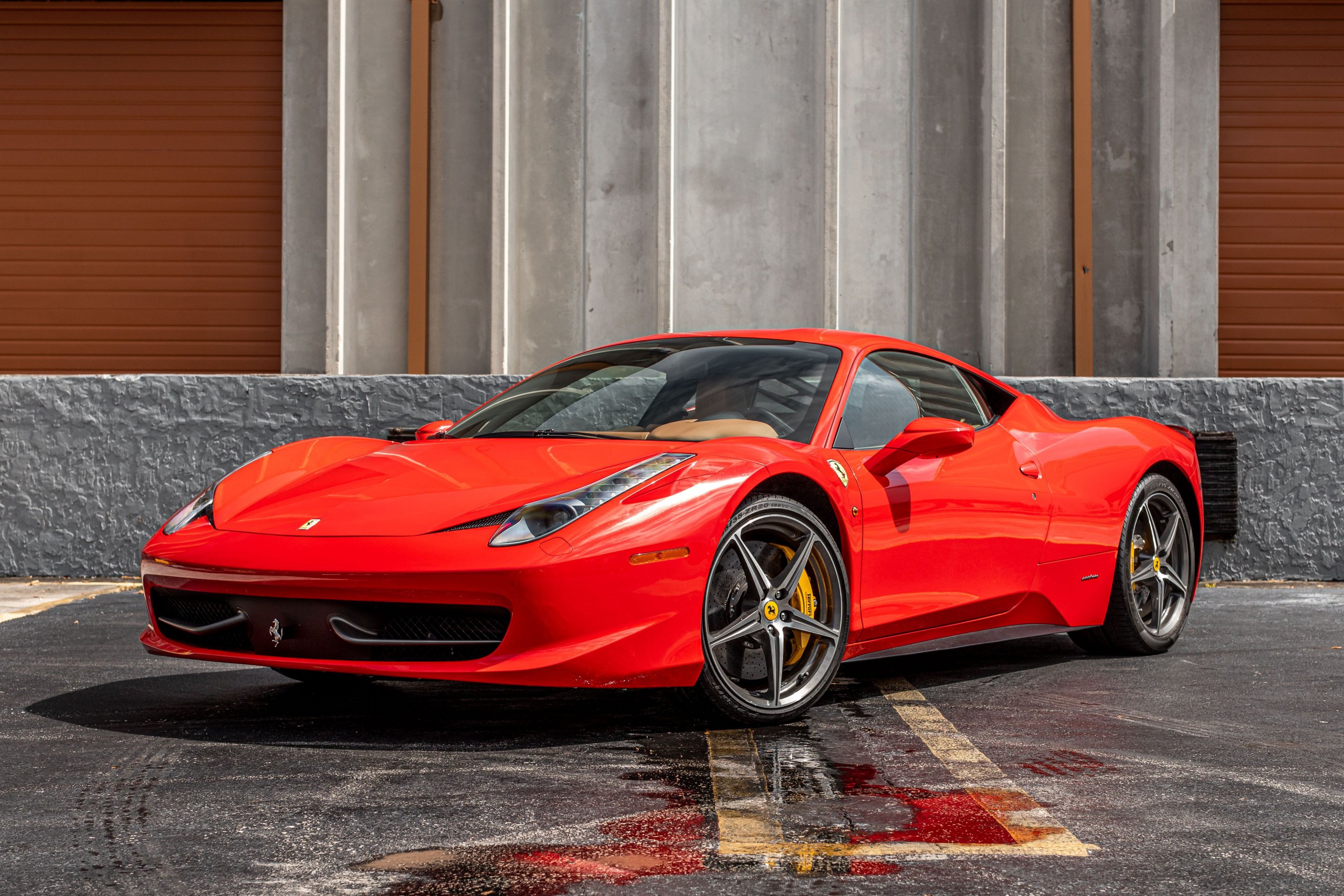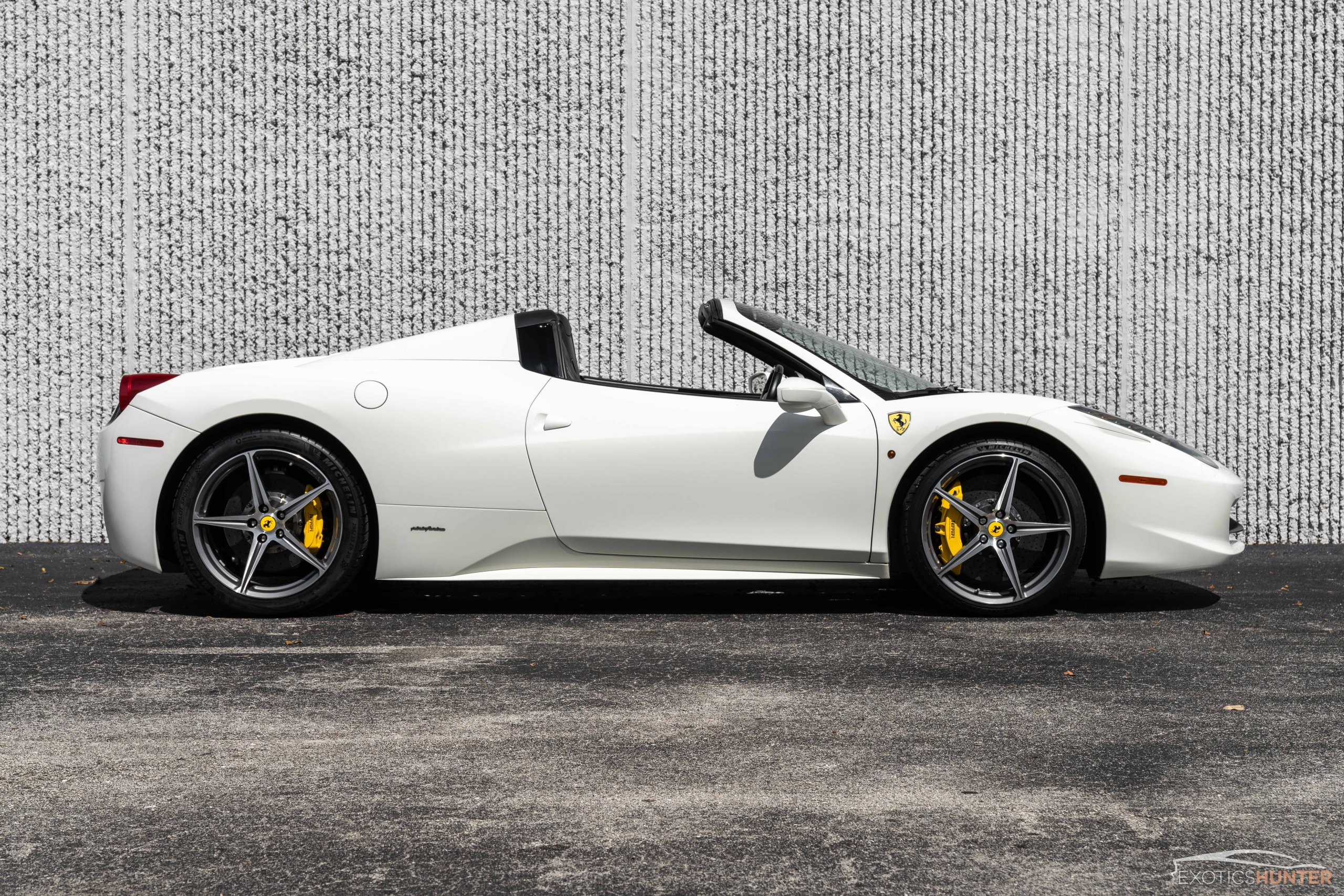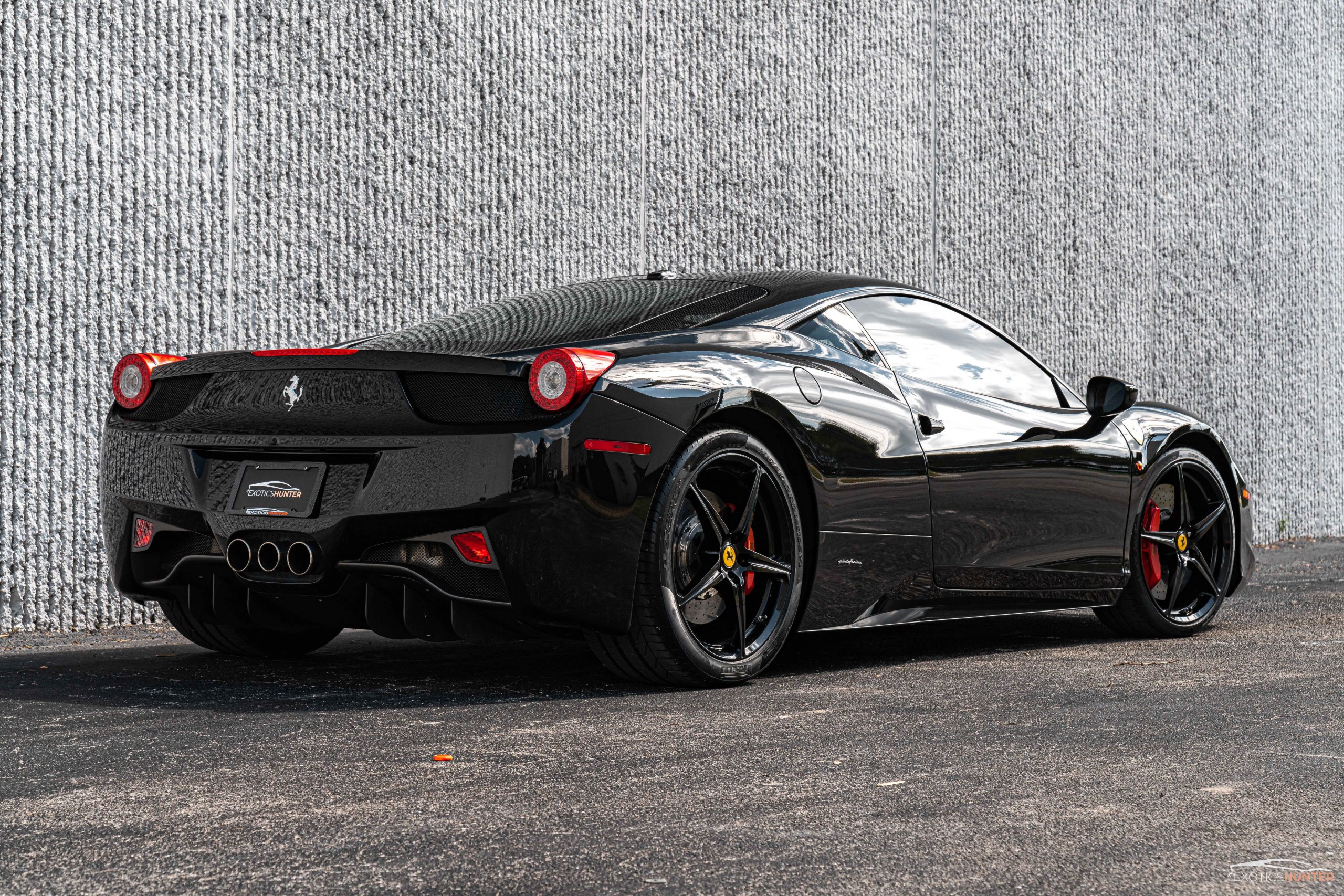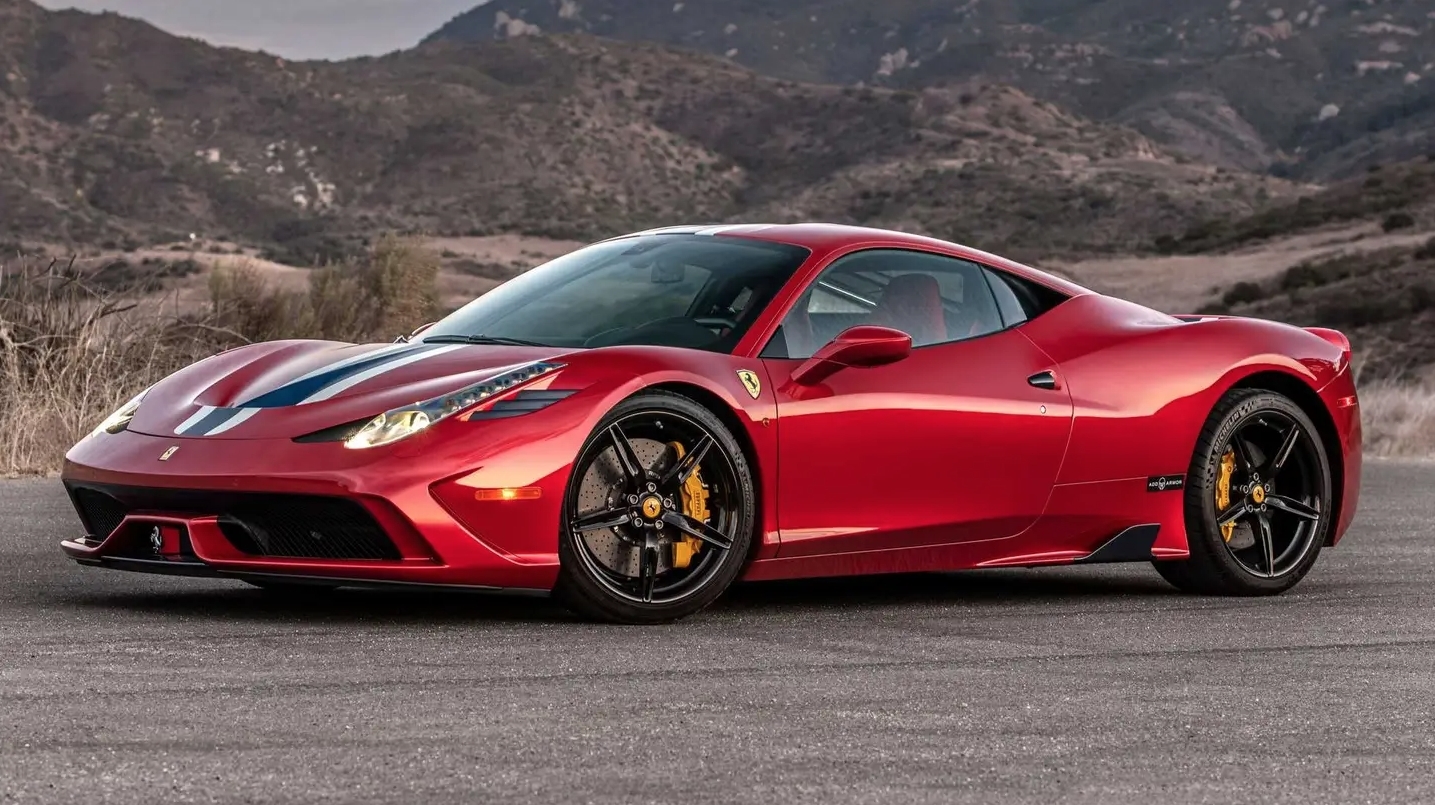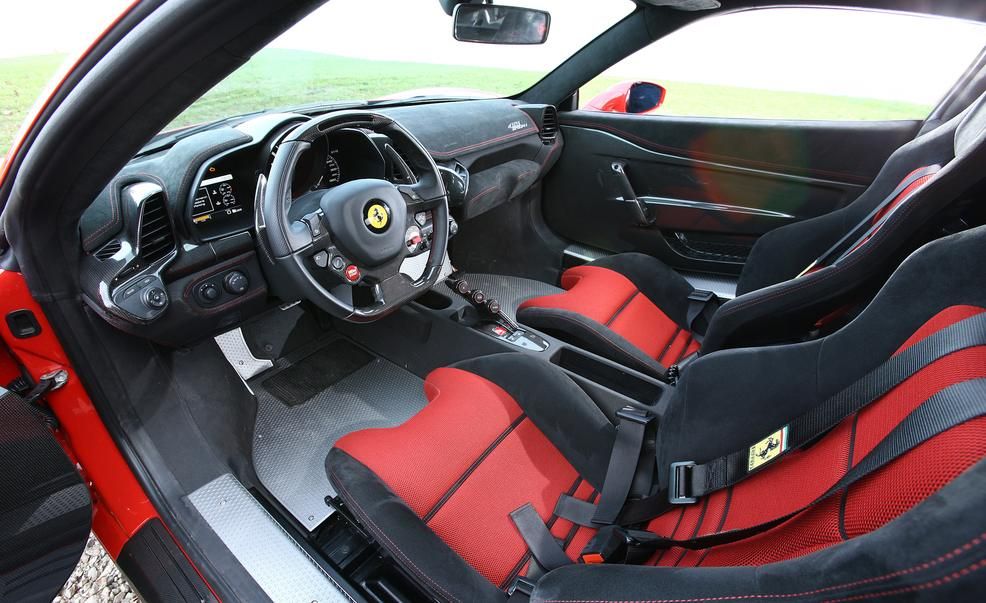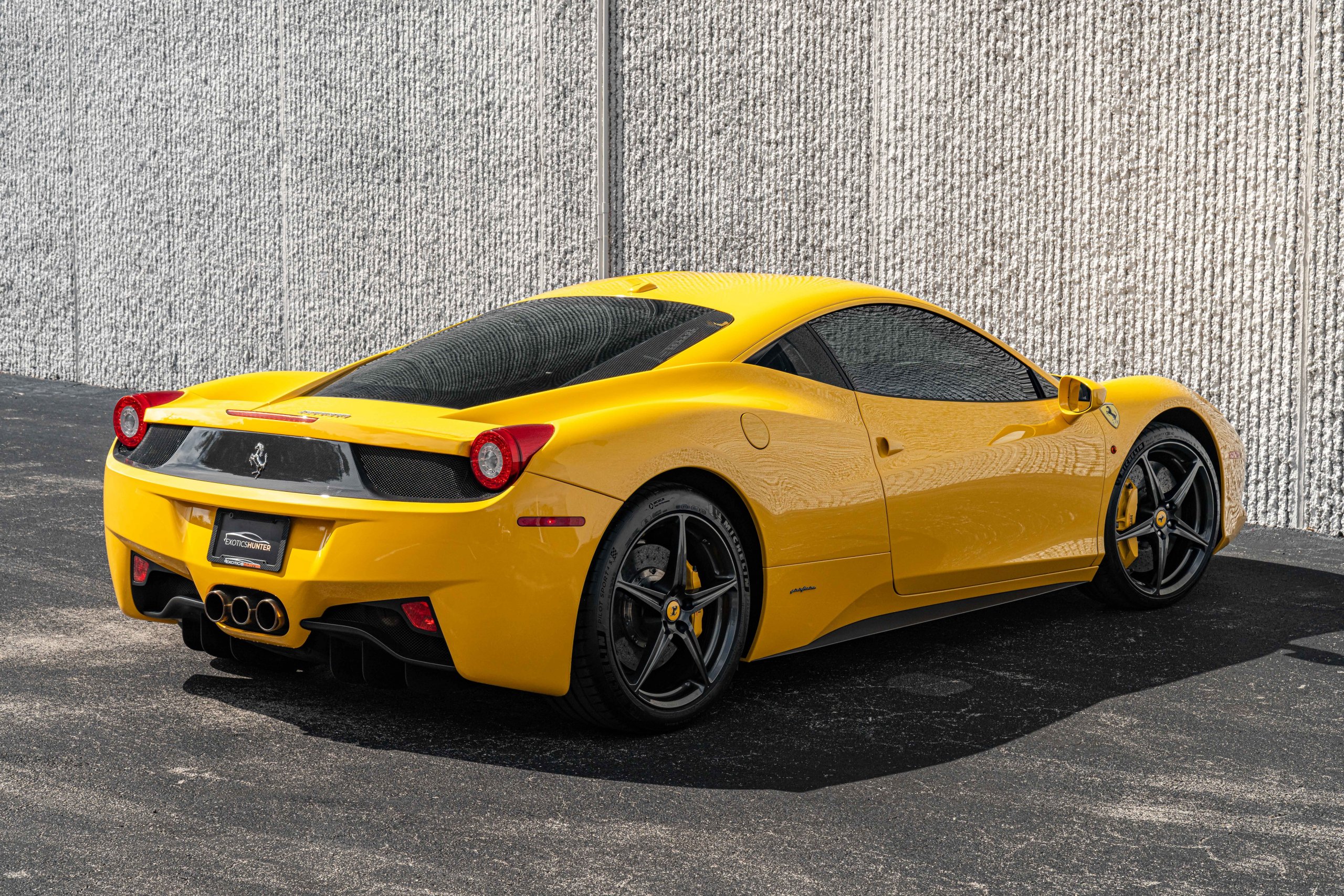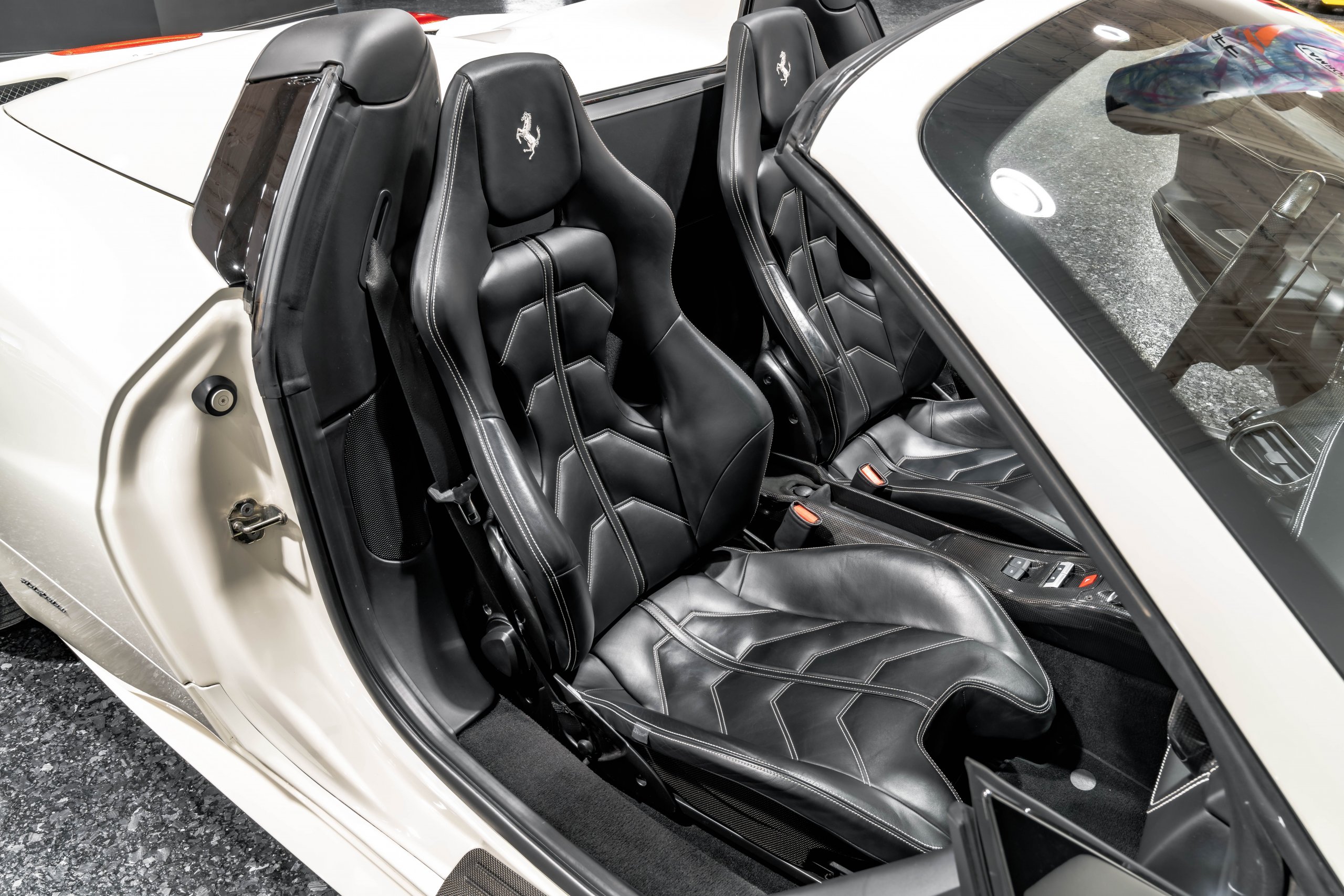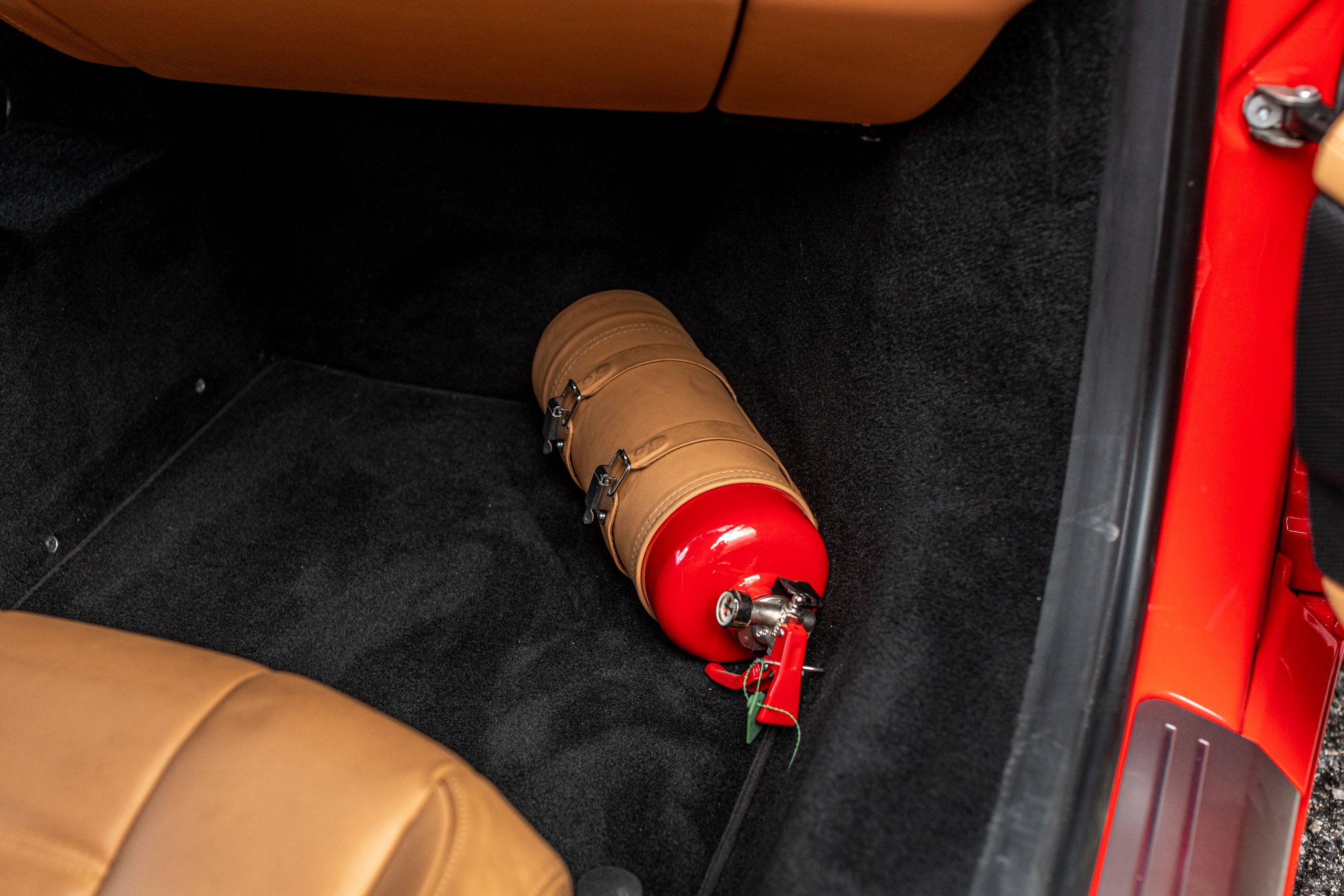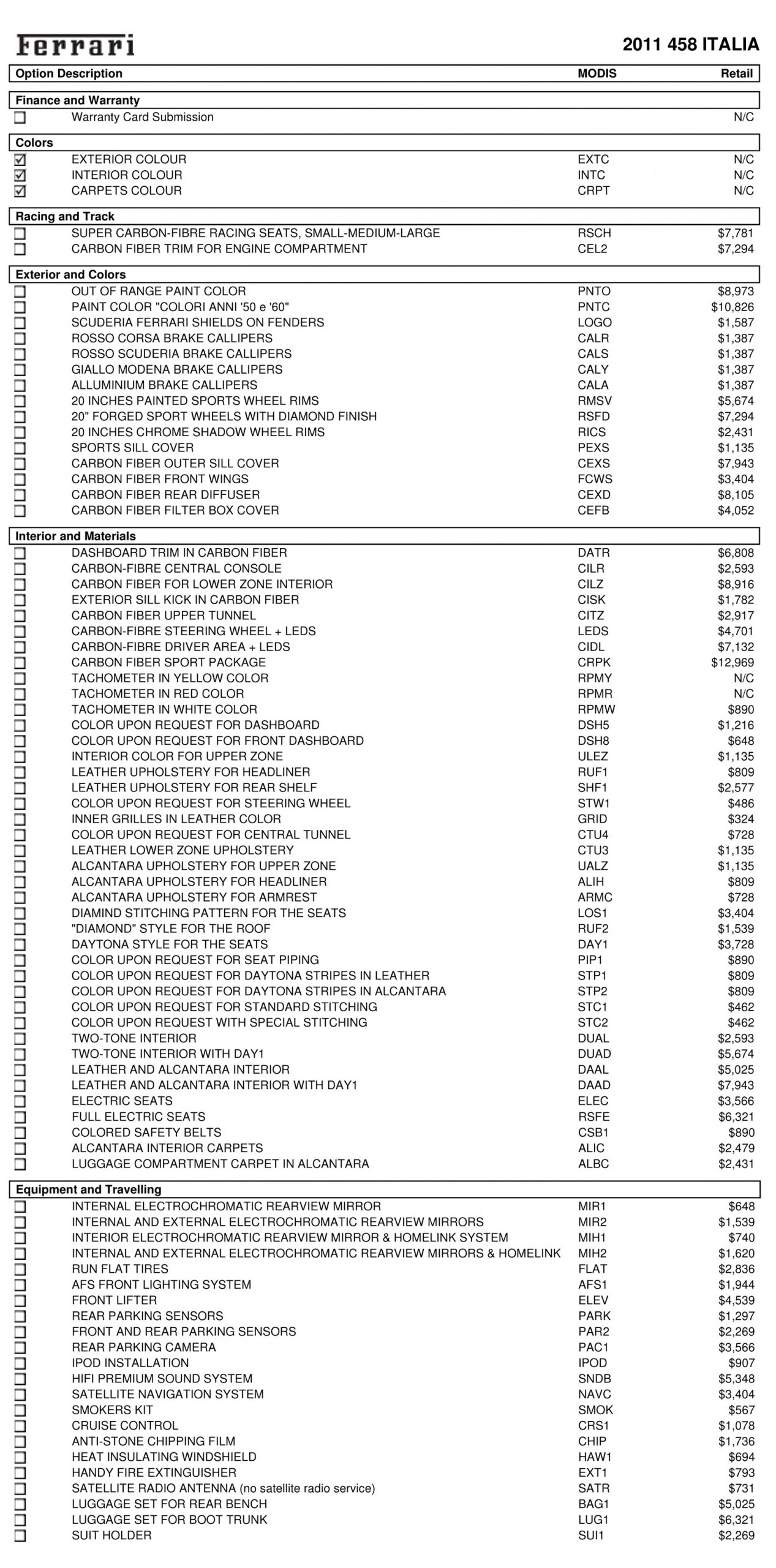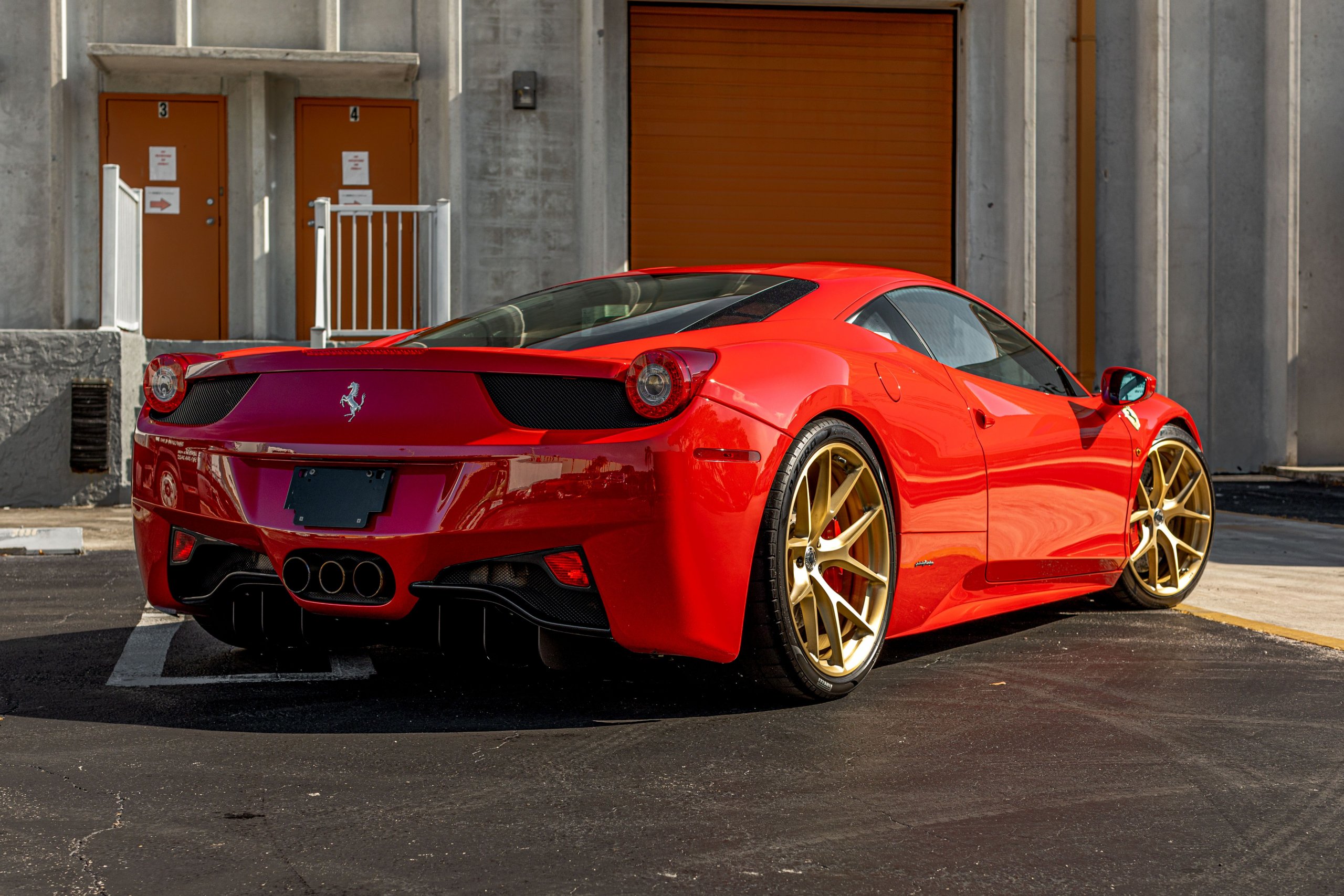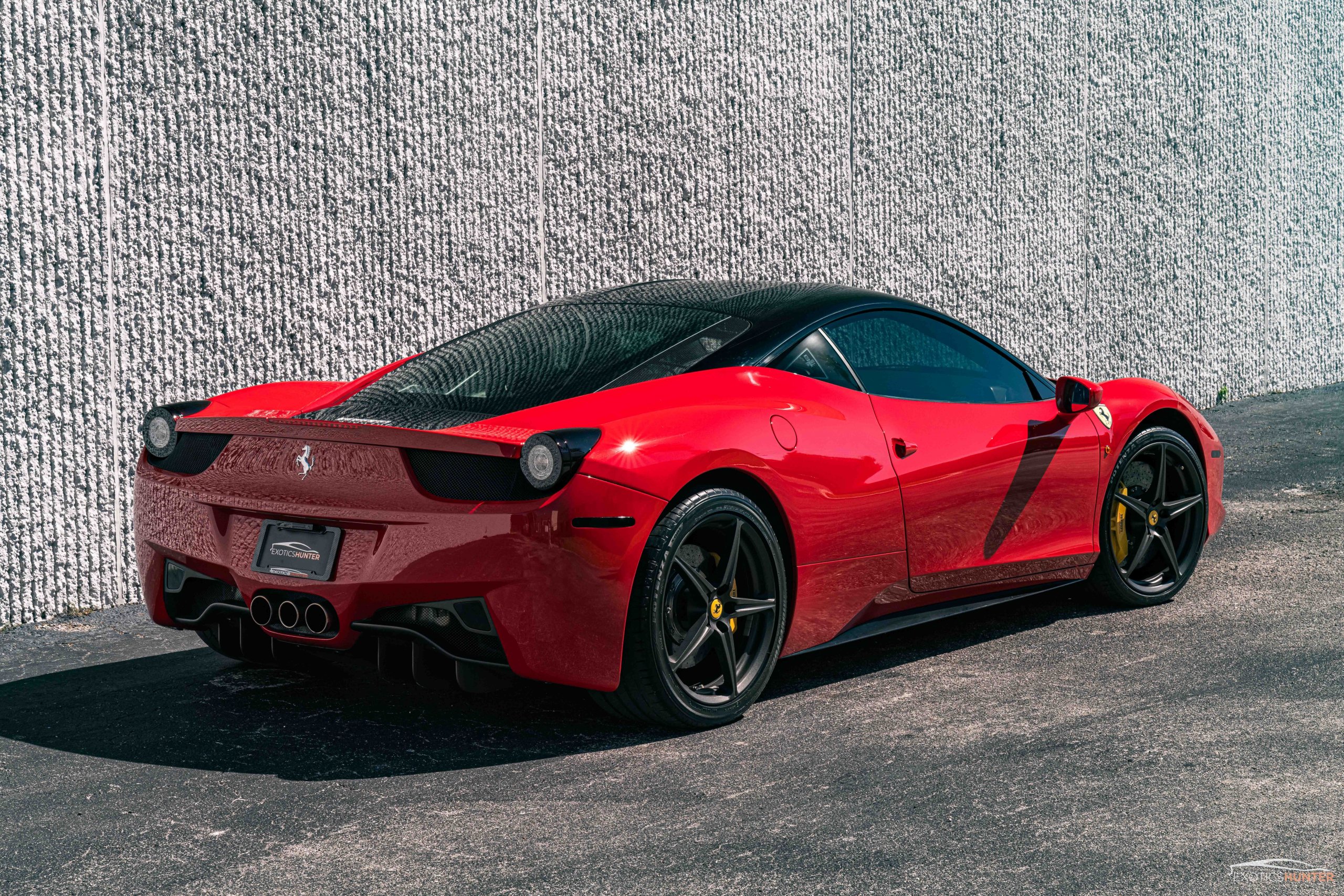The Ferrari 458 Italia needs no introduction, as it’s one of the most praised and reliable Ferrari that has ever been released in 2010. On the street or the racetrack, there's hardly any criticism of Ferrari's achievements with the innovative design of the 458. It's adaptability and driving pleasure are unparalleled.
Replacing the F430, the 458 marked a new era for the mid engine V8 Ferrari. The level of refinement and improvement between the Ferrari F430 and the 458 can nearly be measured in light years.
The 458's design is unmistakably Ferrari, showcasing a blend of simplicity, elegance, and aggressiveness that has shown to be timeless over time. It was a new design language for Ferrari that proved to work and look modern even today.
Revving up to 9,000 rpm with 562 hp, the 458's V8 engine is a 4.5-liter naturally aspirated powerhouse, delivering an impressive 125 bhp per liter. A seven-speed dual-clutch transmission is the only available choice for buyers.
With the use of thinner aluminum body panels and a touch of carbon-fiber composites, the 458 maintains a curb weight of 3,400 pounds, which is less than a 100-pound increase compared to the F430.
Aerodynamics is a big deal in the 458's design, which creates an impressive 309 pounds of downforce at 120 mph, even without a typical spoiler. The vents on the fenders help release slow air from under the headlights and over the fenders, reducing lift and improving the car's aerodynamics on the sides.
You can see the large carbon ceramic brakes under the 20-inch wheels, and they give the 458 amazing stopping power that keeps it stable.
The car's steering is super responsive and is considered more sensitive than many other supercars. This gives drivers a precise feel for the wheel position during turns, ensuring great stability.
For the 458's suspension features a double wishbone design at the front and a multi-link arrangement at the back, optimized for the best grip and handling. The suspension can be further customized through various driving modes, thanks to the well-known Manettino switch on the steering wheel.
If you sit in the F430 and then get into the 458 Italia, it feels like you've jumped ahead by two generations of Ferrari instead of just one. Everything in the 458 feels up-to-date and gives off a feeling of carefully crafted quality that wasn't there in the older model.
You will notice that it is a very driver-focused cabin, where most of the controls are on the steering wheel and the vents are protruding towards the driver cockpit.
The 458 has several adjustable driving modes that you can select on the steering wheel Mannetino (little lever), including Low-traction mode for slippery conditions, Sport for daily driving, and Race when you're in a daring mood. The last two settings, CT-off and CST-off, are best suited for track use.
Some of the competitors to the 458 over the years include the Lamborghini Gallardo, McLaren MP4-12C, Mercedes Benz SLS AMG, Audi R8 V10, and the Porsche 911 Turbo S. While those are great competitors, the Ferrari is the perfect example of a classic supercar that carries the mystique of the prancing horse badge.
Model Changes (Breakdown by Year)
2010 Ferrari 458
The 2010 model is the first full year of production for the 458, which replaced the Ferrari F430.
Featuring a 4.5-liter V8 engine that produces 562hp.
The starting price of the 458 was $226,000, which was comparable to its rivals in the market.
2011 Ferrari 458
Mechanically, the 2011 Ferrari 458 was basically the same as 2010.
However, 2011 gave birth to the 458 Spider, featuring an open-top roof to experience the full symphony of the screaming V8 engine.
The 458 isn't like the fabric convertible tops found on the 348-through-430 Spiders; instead, it closely resembles the targa-style GTS versions of the earlier 308 and 328 models. Rather, it features a retractable hardtop convertible, offering the ideal combination of both styles.
The downside of a retractable hardtop convertible is that the 458 loses its glass cover to show off the engine like the 360 and F430 Spider and The Spider is said to weigh 110 pounds more than the coupe, and its frame isn't as rigid, even with the reinforced sills and structural supports.
Base price starts at $257,000 ($31,000 more than coupe).
2012 Ferrari 458
In 2012, the 458 saw only minor changes, including updates to the software and a few tweaks to the options. Software upgrades for this model provided a more forceful shift in race mode and a gentler exhaust sound, eliminating pops, crackles, and bangs. Other modifications involved updated engine maps, along with tweaks to the dampers and chassis to enhance handling.
The most appealing update was the inclusion of a free 7-year maintenance package, in addition to the 3-year factory warranty.
Other notable changes for the 2012 Ferrari 458:
- Handling Kit Upgrade: Includes a new ECU, accelerometer, hardware, and installation for about $10,000.
2013 Ferrari 458
For 2013, there were no known updates to the Ferrari 458. This was in preparation for the release of the high-performance variant of the 458 to be released in the following year.
2014 Ferrari 458
In 2014, Ferrari introduced the 458 Speciale. Similar to the previous F430 Scuderia and 360 Challenge Stradale, the 458 Speciale was a limited-edition, track-ready version with more power and lighter weight than the standard model.
The Speciale is packed with enhancements that you might not have imagined possible or needed if you've ever driven the 458 Italia.
It offers faster gear shifts, quicker cornering, and shorter braking distances. The Speciale underwent several revisions, including redesigned pistons, intake ports, crankshaft, and a titanium exhaust system, which increased the compression which made it 597hp (35hp more than the standard 458) and 200 pounds less weight, it's faster than the base model, both on straightaways and around the track.
In addition, the Speciale saw some electronic upgrades, including the introduction of a Side Slip Angle Control (SSC) system. This innovative system was designed to improve vehicle control at the highest performance levels by managing torque distribution through the electronic differential.
The SSC system essentially performs a continuous, millisecond-by-millisecond analysis of the car's position to optimize torque and traction control management.
We cannot forget that the transmission software has also been updated, so it shifts much quicker now.
The updated body design showcased a vented hood, new bumpers, forged wheels, a redesigned rear bumper and diffuser, and new side skirts with an added winglet.
These modifications not only improved downforce but also made the 458 Speciale the most aerodynamic Ferrari produced at that time.
For the interior, it features extensive carbon fiber and Alcantara elements. There's no glove box, carpeting on the floors, or even an armrest on the doors. However, it does come equipped with a stereo, navigation system, and an optional advanced telemetry system that collects data through GPS.
Base price started at $298,000 ($72,000 more than the standard 458).
2015 Ferrari 458
In celebration of the 458's final chapter before its successor arrives, Ferrari unveiled the convertible Speciale, the Aperta edition. It is only limited to 1 of 499 produced and was sold out very quickly.
The Speciale Aperta mirrored the coupe in design, although it carried additional weight because of its retractable hardtop. However without a doubt, one could overlook being slightly slower to reach 60mph when it’s got the 597hp V8 engine that revs up to 9000rpm.
Base price started at $400,000 ($102,000 more than Speciale coupe).
For 2015, all 4 other 458 variants had no change and Ferrari was preparing for the launch of the 488 GTB.
Ferrari 458’s common problems
The Ferrari 458 is regarded as one of the most reliable Ferraris ever. There are plenty of owners on the market that have well over 50,000 miles and even past 100,000 miles have been achieved.
This breaks the traditional stereotype of supercars being unreliable.
However, it is essential to keep in mind that all cars, even supercars, can have issues and it is crucial to perform a Pre-Purchase Inspection (PPI) from an authorized dealer or experienced independent mechanic to reveal all issues.
Transmission failure: Multiple accounts of transmission issues have emerged for the 2010-2011 Ferrari 458 Italia models. While there hasn't been any official acknowledgment or recall from Ferrari, it's interesting to note that the 2012 models were introduced with updated transmission software. This suggests that Ferrari might have been aware of the problem from the beginning.
Galvanic corrosion around wheel arches: Look for any bubbling around wheel arches, as galvanic corrosion can happen on some 458’s and it can be costly to refinish.
Dashboard leather can tear: It is a known issue that the leather on Ferrari dashboards may tear over time. The appearance of wrinkles can serve as an early indication of this potential problem.
Interior buttons can be sticky: Make sure to inspect the buttons in the interior, as Ferrari is known to have sticky buttons as the car ages.
Recalls
2011 and 2012 Ferrari 458
Engine seizure (Recall no. 12V211000)
Ferrari has issued a recall for a faulty crankshaft that can cause sudden engine seizure, possibly resulting in a crash. It was found that some crankshafts were machined incorrectly during manufacturing and should be replaced. Ferrari has given owners the option of having a new crankshaft and bearings installed or a completely new engine instead.
2010 to 2014 Ferrari 458
Trunk latch (Recall no. 14V487000)
The secondary component of the trunk latch may not release when the car is stationary. This is a relatively small issue but nevertheless, should be replaced by the dealer.
2010 Ferrari 458
Rear fender adhesive (Recall no. 10V389000)
Ferrari issued a recall to 2010 458’s due to the adhesive in the rear fenders. At high temperatures this adhesive can ignite, leading to a fire in the engine bay itself and potential loss of the entire car. Ferrari has remedied this issue with scraping the use of an adhesive altogether and has opted instead for five rivets that will secure the components together. This fix will come at no cost for 458 owners.
Maintenance and Ownership Costs
Compared to other high-performance supercars, owning a Ferrari 458 is considered to have relatively low maintenance requirements.
For individuals who purchase a 2010 or 2011 model, the Ferrari 458 is generally regarded as a low-maintenance vehicle.
Apart from regular maintenance tasks such as oil changes, the 458 Italia demands little additional care. Its DCT transmission is designed to endure the car's lifespan, eliminating the need for clutch replacements.
The 458 also utilizes timing chains, not timing belts, and does not require replacement either.
With that said, it is important to remember that regular maintenance and repairs will still be necessary, and the costs can vary depending on whether you take your car to a dealer or an independent mechanic.
Here is the suggested service schedule and intervals per Ferrari:
ANNUAL or EVERY 6,000 MILES:
- Replace Engine Oil & Filter
- Replace Pollen Filter
- DEIS Scan
- Brake Inspection
- Inspect Transmission Oil and Hydraulic Fluid Levels & Top-Up if Necessary
- Inspect Front & Rear Suspension Systems
- Inspection of Transmission & Differential Assembly
- Inspection of Tire Wear
EVERY 2 YEARS or 12,500 MILES (Includes 6,000 Mile Service Plus)
- Replace Brake Fluid
- Electronic Parking Brake inspection
- Tightening of Engine & Transmission Mounts & Fasteners
- Replace Engine Air Filter
EVERY 4 YEARS or 37,500 MILES (Includes 12,500 Mile Service Plus)
- Replace Auxiliary Belts & Replace Spark Plugs
Here is a rough estimate of typical service costs associated with the Ferrari 458:
- Oil change - As low as $300 for independent mechanics and $800 for dealers.
- Minor Service - Typically includes oil change, cabin filters, and engine filters. The cost from a dealer is around $1,100
- Major Service - Typically includes all the above plus spark plugs, brake flush, and trans flush, expect about $3,000 from a dealer.
- Tires - A set of high-performance tires like Michelin PS4 will cost about $2,000.
- Brakes - Rotors are carbon ceramic which should last forever.
- Clutch - Dual clutch transmission should last the lifetime of the car so expect zero additional expenses for clutch or flywheel service.
Options List
The Ferrari 458 has a list of options and packages that customers can choose from.
458 owners have a range of exterior customization choices, including bespoke paint colors, choosing from an assortment of brake caliper colors to complement the overall design, and browsing through various wheel options such as Stock, Sport, darker Sport, and Diamond Cut Sport to find the perfect match.
The interior of the car offers an even larger scope for personalization, with numerous options such as selecting the rev counter color (red, yellow or white), determining the color for the front and upper dashboard, choosing a leather headliner, and picking a steering wheel color. Additional customizations include opting for Alcantara lining, selecting between seat options like race bucket seats and Daytona seats, fire extinguisher and including colored seat belts.
A handful of 458 customers also went through the Tailor Made program which was a factory-in-house customization program, that allowed customers to personalize their 458 with unique exterior and interior colors, materials, and features that were not available on regular production models.
Because of the strict approval requirements, cars that went through the Tailor Made program are considered highly desirable.
These cars usually command a higher premium in the market due to their exclusivity and uniqueness.
Here is some examples of the ordering guide
2011 Ferrari 458 Italia Options List
Some of the more desirable options to look for include:
- LED steering wheel
- Upgraded wheels (Sport, darker Sport, and Diamond Cut Sport)
- Painted calipers
- Upgraded seats (Racing bucket seats and Daytona seats)
- Back up camera/sensors
- Scuderia shields on fender
- Headliner in leather
- Bespoke colours
- Tailor Made exterior/interior (rare)
Ferrari 458 Price and Values (Coupe/Spider and Speciale/Aperta)
The Best Ferrari 458 to Buy
When it comes to buying a 458, there are a few key factors to consider that can affect the car's long-term value.
Some of the criteria break down into a few categories.
Without a doubt, the high-performance limited edition 458 Speciale and even more rare 458 Aperta is the safest choice to purchase. While they are now expensive, they will continue to hold value and also appreciate in value in the long run. These limited edition Ferraris are very sought after by collectors,
For the 458 being such a great car, all the years from 2010 to 2014 will remain a strong purchase simply because of their reputation for being extremely well-built and reliable vehicles. These cars have a proven track record for being mechanically sound with few major issues.
As hybrid technology becomes more widespread among cars, naturally aspirated V8s are becoming highly sought after by collectors and enthusiasts in the current market.
In addition to limited edition models, the condition and mileage of the car are also important factors to consider when buying a 458. There are many that have been driven hard and have been highly modified.
But the ones that are more likely to retain their value in the long run and will fetch the most money will be a well-maintained car with low mileage.
Therefore, it's important to do your research, compare prices, and look for well-maintained cars if you are considering purchasing an Huracan with the goal of not losing any money.
Conclusion
In conclusion, for around ($200,000+) the Ferrari 458 Italia is a great choice for a supercar that you can rely on.
Although the rivals in this category are great cars, Ferrari has designed a car that not only redefines the brand but also proves their ability to create dependable vehciles. The 458 can be used everyday, but double as a track car and have minimal upkeep costs.
In summary, the 458 will continue to be a sought after car for the years to come and it is an ideal time to invest in one if you have been contemplating the purchase.
Car Hacking Shortcuts
Limited edition models such as 458 Speciale and 458 Aperta are collectables, and will continue to appreciate in value.
Spec matters: Look for any Tailor Made colors or optional colors.
Optional wheels.
Racing seats or Daytona seats.
Look for well-maintained, low miles 458.

